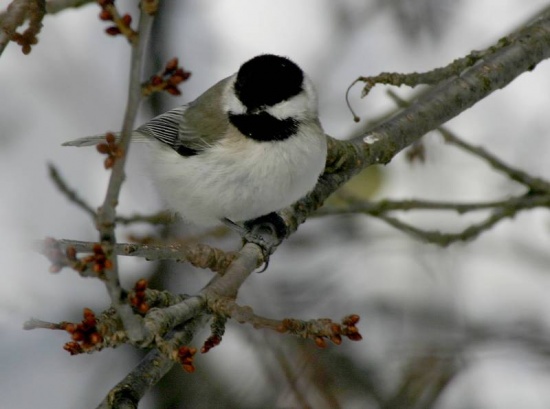
Parus lugubris
SUBFAMILY
Parinae
TAXONOMY
Parus lugubris Temminck, 1820. Five subspecies.
OTHER COMMON NAMES
French: Mйsange lugubre; German: Trauermeise; Spanish:
Carbonero Lъgubre.
PHYSICAL CHARACTERISTICS
5.5 in (14 cm); 0.5–0.7 oz (15–19 g); general plumage color
typical of the ‘black-capped’ tits; sexes similar.
DISTRIBUTION
P. l. lugubris: Balkans and Greece; P. l. anatoliae: Greek island
of Lesbos, Asia Minor, southern Transcaucasia, Levant and
northern Iraq. P. l. hyrcanus: southeast Transcaucasia and
northern Iran; P. l. dubius: southwest Iran and northeast Iraq;
P. l. kirmanensis: southern Iran.
HABITAT
Open broadleaf and conifer woodlands, parkland, orchards,
gardens, vineyards, and scrub habitats at higher elevations including
olive (Olea) groves.
BEHAVIOR
Resident and largely sedentary. Seasonally territorial with
members of pair remaining together throughout year, but may
join mixed-species flocks. Song bouts short and infrequent.
FEEDING ECOLOGY AND DIET
Forages throughout crowns of trees and shrubs, and on
ground. Diet is large range of invertebrates and some seeds.
Unlike many other tits, does not store food.
REPRODUCTIVE BIOLOGY
Nests in cavities in trees or occasionally rocks; uses nest-boxes.
Most subspecies use existing cavities, but P. l. hyrcanus excavates
own nest cavity (both sexes taking part). Eggs laid March
through April, with second clutches May through June. Clutch
size five to 10 eggs (average is seven). Incubation: 12–14 days,
by female alone. Brood period to fledging: 21–23 days.
CONSERVATION STATUS
Not threatened. Has a relatively restricted range and occurs at
low breeding densities, but population size in European part of
range estimated to be 130,000–640,000 pairs, about 75% of
world population.
SIGNIFICANCE TO HUMANS
None known.
Photo Gallery of - Sombre tit




 Animalia Life
Animalia Life